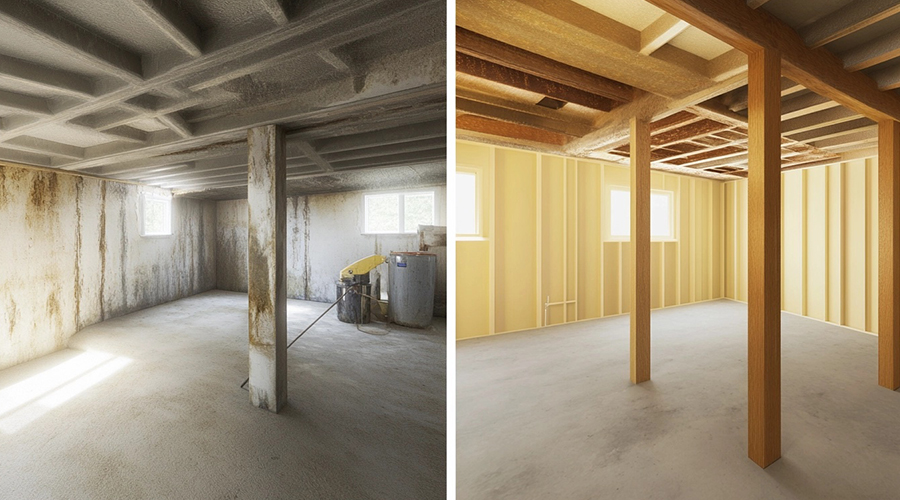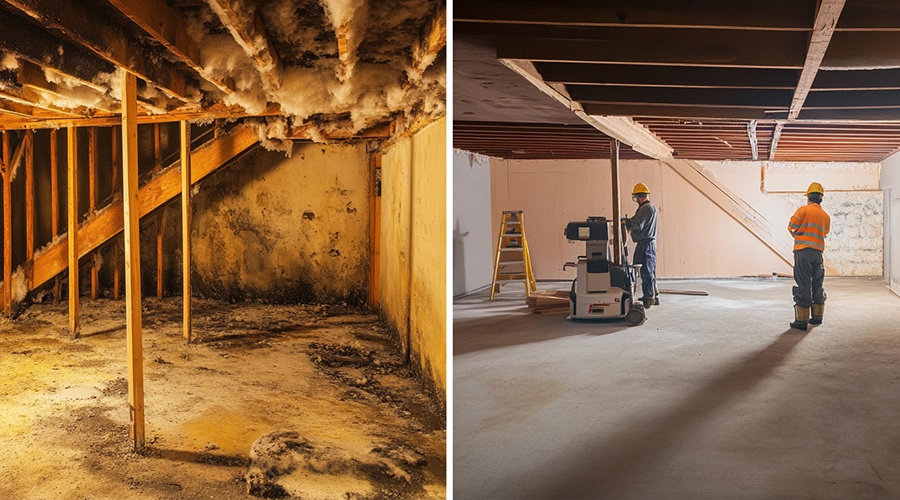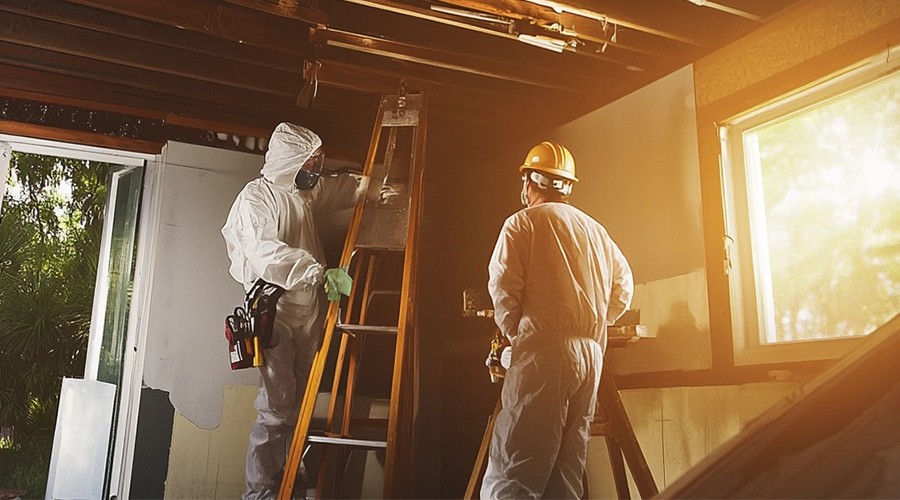Discovering mold in your home can be alarming. Those dark patches on your bathroom ceiling or the musty smell in your basement aren’t just cosmetic issues—they can impact your family’s health and your home’s structural integrity. The good news? With proper remediation, you can restore your home to a healthy, mold-free environment. Let’s walk through the essential steps of professional mold remediation in Dallas Fort Worth, TX — and why addressing these issues promptly matters.
Understanding the Mold Problem
Mold is a type of fungus that thrives in moist environments. It reproduces by releasing tiny spores that float through the air, looking for suitable places to grow. When these spores land on damp surfaces in your home, they can quickly develop into mold colonies.
Common indoor mold triggers include:
- Water leaks (pipes, roof, windows)
- Poor ventilation
- Flooding
- High indoor humidity
- Condensation
While some molds are relatively harmless, others can cause significant health problems, especially for those with respiratory conditions, allergies, or compromised immune systems.
Health Impacts of Mold Exposure
Mold doesn’t just damage your property—it can affect your health in several ways:
- Respiratory issues: Coughing, wheezing, throat irritation
- Allergic reactions: Sneezing, red eyes, skin rashes
- Asthma attacks: Triggered or worsened by mold exposure
- Chronic sinusitis: Persistent sinus infections
- More serious effects: In some cases, exposure to certain molds can lead to more severe health complications
This is why prompt remediation isn’t just about protecting your property—it’s about protecting your family’s well being.
The Professional Mold Remediation Process
1. Thorough Inspection and Assessment
The remediation process begins with a comprehensive inspection. Certified mold remediation specialists will:
- Visually examine affected and potentially affected areas
- Use moisture meters to detect hidden moisture problems
- Sometimes employ infrared cameras to find water intrusion not visible to the naked eye
- Take samples for mold testing if necessary to identify mold types
- Document the extent of the contamination
This assessment provides the foundation for an effective remediation plan tailored to your specific situation.
2. Containment of Affected Areas
Before active removal begins, professional remediators will contain the affected area to prevent cross-contamination. This typically involves:
- Setting up physical barriers with plastic sheeting
- Creating negative air pressure to prevent spores from spreading
- Sealing HVAC ducts to keep spores out of your ventilation system
- Establishing clean rooms and decontamination areas for workers
These containment measures ensure that mold spores disturbed during remediation don’t spread to clean areas of your home.
3. Air Filtration
Specialized equipment is deployed to capture airborne mold spores:
- HEPA (High-Efficiency Particulate Air) filtration units
- Air scrubbers to continuously clean the air
- Negative air machines to maintain proper air pressure
These systems work continuously throughout the remediation process, capturing invisible spores that could otherwise settle elsewhere in your home.
4. Removal of Mold-Infested Materials
This is the core of the remediation process:
- Non-salvageable materials (severely damaged drywall, insulation, carpeting) are carefully removed and disposed of following proper protocols
- Salvageable surfaces are cleaned using specialized antimicrobial cleaners
- Stubborn mold may be removed through sanding, wire brushing, or other mechanical means
- Structural elements are treated with appropriate solutions to kill remaining mold
Throughout this process, workers wear personal protective equipment (PPE) to protect themselves from exposure.
5. Cleaning of Contents
Your belongings in the affected area need attention too:
- Furniture, decorative items, and personal possessions are carefully cleaned
- Fabric items may require specialized cleaning or in some cases replacement
- Documents and photos might need professional restoration
- Electronics may need assessment by specialists
These items are typically cleaned in a separate, controlled environment before being returned to your home.
6. Drying and Moisture Control
Since moisture is the root cause of mold growth, thorough drying is essential:
- Industrial dehumidifiers extract moisture from the air and materials
- High-powered fans accelerate evaporation
- Moisture readings are taken regularly to ensure complete drying
- In some cases, specialized drying equipment for subflooring or wall cavities may be required
This step often takes several days, as rushing the drying process can lead to future mold problems.
7. Repair and Restoration

Once the mold is removed and the area is thoroughly dried:
- Damaged building materials are replaced
- Walls are repainted (often with mold-resistant paint)
- Flooring is restored or replaced
- Fixtures and trim are reinstalled
The goal is to return your home to its pre-mold condition—or better!
8. Final Inspection and Clearance Testing
Before the job is considered complete:
- A thorough visual inspection confirms no visible mold remains
- Air samples or surface samples may be taken to verify mold spore levels have returned to normal
- Moisture levels are checked one final time
- All restoration work is inspected for quality
This verification gives you confidence that the remediation was successful.
Preventing Future Mold Problems
After remediation, maintaining a mold-free home requires ongoing attention:
- Fix leaks promptly
- Maintain indoor humidity between 30-50%
- Ensure proper ventilation, especially in bathrooms and kitchens
- Use dehumidifiers in naturally damp areas
- Clean and dust regularly
- Consider mold-resistant products for future renovations
Your remediation professional can provide specific recommendations for your home’s unique characteristics.
When to Call the Professionals
While small areas of surface mold (less than 10 square feet) can sometimes be addressed by homeowners, professional remediation is recommended when:
- The mold covers more than 10 square feet
- There’s mold in your HVAC system
- The mold resulted from contaminated water (sewage, flooding)
- You have underlying health conditions that could be worsened by mold exposure
- The mold returns after previous cleaning attempts
- There are structural issues involved
Professional remediators have the training, equipment, and expertise to safely and effectively resolve even serious mold problems.
Don’t wait until mold becomes a major problem! If you’re concerned about mold in your home or business, call AF Environmental today at (817) 903-6457. Our certified remediation experts can provide a thorough assessment and develop a customized plan to restore your healthy indoor environment.
The Investment in Your Health and Home
Mold remediation is an investment in both your property and your family’s well being. While costs vary depending on the extent of the problem, proper remediation:
- Protects your home’s value
- Prevents structural damage that could lead to costly repairs
- Creates a healthier indoor environment
- Gives you peace of mind
Remember, the cost of remediation is almost always less than the combined costs of health impacts and progressive damage to your home.
Conclusion
Mold remediation isn’t just about removing unsightly spots—it’s a comprehensive process that addresses the root causes of mold growth while safely eliminating existing contamination. By understanding the remediation process and working with qualified professionals, you can transform your home from a mold-prone environment to a healthy space where your family can thrive.
If you’re facing mold issues, don’t delay. Professional remediation is your path to restoring not just your home, but the health and comfort of everyone who lives there.


